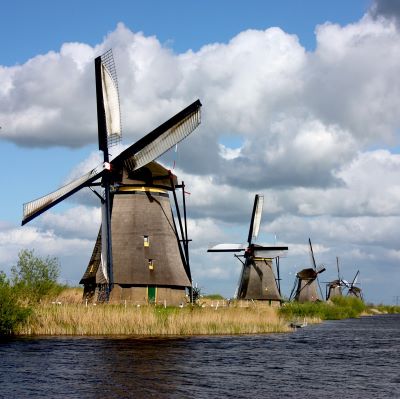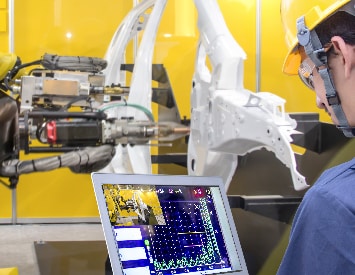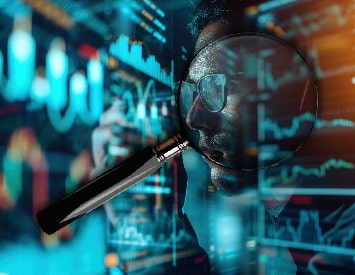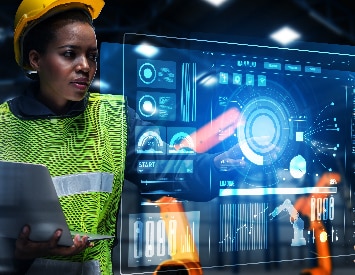In the realm of innovation and sustainable energy solutions, collaboration knows no bounds. In this article, we explore the inspiring journey of three students from the Engineering Institute of Technology (EIT), studying towards the Bachelor of Science (Civil & Structural Engineering) (BCS) and the Bachelor of Science (Electrical Engineering) (BEE).
They have joined forces to tackle the complex task of designing a windmill in Kalbarri, WA.
Exploring Windmill Design and Sustainability
The group project comprised EIT’s very own student ambassador, Nyasha Mupudzi (BCS), and fellow students, Mingook Cho (BCS), and Parmeshwari Chalise (BEE).
Their multidisciplinary teamwork promises to harness the power of nature and shape the future of renewable energy.
EIT sat down with all three students for an interview on their group project.

What inspired your project?
Cho: “Our final year project was a concerted effort aimed at crafting a sustainable wind farm with an innovative windmill design.” The primary goal was to enhance the windmill’s structural robustness to endure diverse environmental challenges while maximizing energy production. Ultimately, the project sought to contribute significantly to the adoption of renewable energy in Kalbarri, WA.
Mupudzi: “Our collective aim was to fine-tune the structural aspects of the windmill, ensuring its resilience against diverse environmental conditions while actively working towards reducing Australia’s carbon footprint.”
How did your diverse backgrounds and expertise contribute to the overall success of the wind farm project?
Chalise: “Our project’s triumph hinged on the diversity of our backgrounds. Leveraging my electrical engineering expertise, I concentrated on enhancing the windmill’s generator, optimizing power conversion systems, and fine-tuning control mechanisms for peak electrical performance. Meanwhile, my colleagues tapped into their civil and structural expertise, ensuring a well-rounded approach.”
Cho: “Drawing from my civil engineering acumen, I concentrated on the windmill’s foundation and structural stability, underpinning its safety and long-term functionality.”
Mupudzi: “My specialized knowledge in structural engineering was instrumental in assessing and bolstering the windmill’s tower, and blades, and conducting meticulous load analysis. Our combined multifaceted expertise helped to ensure the windmill’s safety and structural integrity.”
Can you share an example of a situation where the collaboration between different students in different programs enhanced the quality of the project?
Cho offered an example; he explained the interdisciplinary collaboration enhanced the project when Chalise suggested incorporating smart sensors into the windmill’s design. These sensors helped monitor structural health and detect any faults early, ensuring the windmill’s reliability.
Whereas Chalise testified that Mupudzi and Cho introduced innovative materials for the windmill tower, to reduce weight and construction costs while maintaining structural integrity.
Describe the challenges you faced while working together and the strategies you employed to overcome them.

“Navigating challenges stemming from disparities in technical language and methodology was a pivotal aspect of our journey. To surmount these hurdles, we prioritized open communication, holding frequent meetings, and ensuring clear explanations for intricate concepts”, noted Mupudzi.
Cho said the team established regular meetings and a collaborative approach to harmonize their objectives.
Chalise addressed another hurdle, saying, “Facing limitations such as the absence of physical labs for simulations was indeed challenging. However, our reliance on remote labs within Moodle proved to be a valuable asset in overcoming this obstacle.”
What strategies did you employ to effectively communicate and coordinate your efforts as a diverse team?
Effective communication and coordination were essential. “We utilized project management tools, maintained clear documentation, and held regular meetings to ensure everyone was aligned on project progress and objectives. We would meet on the school campus with our supervisor on a weekly basis to discuss the progress and any challenges and to deal with any challenges”, explained Chalise.
Can you describe a specific instance where you had to combine your different skill sets to solve a complex problem during the project?
Mupudzi: “A specific instance of combining our skills occurred when we faced a complex issue related to blade design and windmill stability. By integrating structural and electrical expertise, we developed a blade system that improved energy conversion efficiency while maintaining structural stability.”
Cho: “A specific instance where we combined our skills was during a complex problem involving the windmill’s foundation design. By integrating structural and electrical expertise, we developed a foundation that allowed for the seamless installation of power cables while maintaining structural stability.”
Chalise: “A specific instance of combining our skills occurred when we faced a complex problem related to windmill control in high winds. By integrating electrical and structural expertise, we developed a control algorithm that adjusted the windmill’s orientation to reduce structural stress and improve power output.”
What did you learn from working with teammates from different disciplines, and how has it influenced your personal and professional growth?
When asked what they’d learned working with teammates from different disciplines, Cho, Chalise, and Mupudzi all agreed that working in a multidisciplinary team taught them the value of collaboration and the importance of interdisciplinary teamwork in solving complex engineering problems. According to Cho, it had broadened his perspective and enhanced his adaptability.”
In what ways did your individual perspectives and knowledge cater to the overall output of the project?
Chalise: “My electrical engineering perspective ensured the windmill’s electrical efficiency, power generation, and control systems were optimized for maximum energy output. Power distribution was also part of my design objective.”
Cho: “My civil engineering perspective ensured that the windmill’s foundation and tower were robust and able to withstand extreme weather conditions (a seismic analysis was also completed). My contribution focused on the project’s structural stability, the design of the foundation, and the geotechnical aspect of it.”
Mupudzi: “My structural engineering perspective contributed to the windmill’s structural integrity and safety, ensuring it could withstand strong winds and environmental stressors. The design of the steel structural tower was my main role. Wind design and analysis was my other area of expertise.”
How did you initially perceive EIT’s decision to assign a group project that includes students from various disciplines?
When asked about their initial perceptions, all students agreed that initially, they had reservations about EIT’s decision to assign a group project with students from different disciplines.
However, they quickly realized the advantages of this approach, as it closely resembled real-world engineering projects that demand diverse expertise.
What did the project teach you as an individual, in terms of diversity and inclusivity?
When asked about their takeaways, all students agreed that the project was a valuable lesson in the importance of diversity and inclusivity in problem-solving. They collectively agreed that embracing different perspectives and backgrounds contributes to more comprehensive, innovative, and well-rounded solutions, fostering an inclusive and dynamic learning and working environment.
Looking back at your collaboration experience, what advice would you give to future student teams working on interdisciplinary projects?
All students shared the same perspective when reflecting on their advice to future student teams involved in interdisciplinary projects. They collectively recommend fostering open communication, recognizing and appreciating the strengths of each discipline, and viewing diversity as a powerful tool for innovation, creativity, and comprehensive problem-solving.


